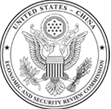×
Filter Results
Filter Results

Staff Paper
Over the last 15 years, Mexican drug organizations have replaced domestic producers as the main manufacturers and distributors of meth in the United States. While Mexican cartels produce the majority (around 90 percent) of meth used in the United States, around 80 percent of precursor chemicals used in Mexican meth come from China. Precursor chemicals are increasingly being shipped from China to Mexico and Central America, where they are manufactured into meth, transported across the southern border of the United States, and brought into southwestern states—Texas, Arizona, and California—before being shipped across the country. Despite international counternarcotic efforts, meth precursor manufacturers in China continue to thrive because the country’s vast chemical and pharmaceutical industries are weakly regulated and poorly monitored. This report examines the extent of China’s illicit chemical production and the effectiveness of U.S. and international efforts to reduce precursor chemical flows.

Research
This paper analyzes China’s preferential trade strategy and rationale. It finds that China has signed trade agreements primarily with countries that are neither significant in the global economy nor vital to China’s export sector. Indeed, several partners enjoy bilateral trade surpluses with China, and have comparative advantages in industries that China may want to protect from outside competition. The way in which China negotiates trade deals is also confounding. Unlike the United States, China appears to lack a modus operandi, so that the scope, strength, and details of its agreements vary widely. Some appear exceedingly generous to the trade partner, while others aggressively promote and protect domestic industries. With respect to services, investment, and other advanced provisions, China tends to fall well short of U.S. standards; yet it also demonstrates greater ambition and flexibility than developing country peers like India and Brazil.

Research
Since the Commission’s examination in 2008 of prison labor issues in the People’s Republic of China (PRC), there has been little substantive reduction in the scale and scope of China’s broad network of prison labor facilities. These facilities, led by local officials, continue to produce goods intended for export on a potentially large scale, in violation of U.S.-China agreements on the exports of prison labor goods to the United States. Although U.S. representatives in Beijing have continued to engage with their Chinese counterparts regarding suspected prison manufacturing facilities, the pattern of long delays and minimal cooperation by officials in the PRC Ministry of Prisons persists. Further, it is unclear whether the recent abolition of “reeducation through labor” (RTL) and reported release of up to tens of thousands of prisoners will have a significant impact on the prison labor system and export of prison labor products.

Research
On May 21, China signed a 30-year, $400 billion gas supply deal with Russia. The agreement concluded a decade of protracted negotiations, and coincided with an escalation of the Ukraine crisis in Europe. This paper examines the conditions, motives, and implications of the deal. It begins by looking at China’s energy needs and gas import strategy, as well as Russia’s Asia pivot. It then analyzes the key points of contention – the price, shipping route, and payment and investment conditions – and whether or not these were resolved in China’s favor. Section 3 places the deal in the context of Sino-Russian relations, in terms of geopolitics, economic ties, and a maturing energy partnership. The paper closes with implications for the United States, Europe, and Japan.

Research
Written by USCC Research Fellow (2011): Joseph Casey


Research
Prepared for the USCC by the NSD Bio Group, LLC

Research
Prepared by Terence P. Stewart, Eric P. Salonen, and Patrick J. McDonough, Stewart and Stewart, August 2007

Research
Prepared for the USCC by Dr. Charles W. McMillion, MBG Information Services, June 6, 2007

Research
Prepared for the USCC by Dr. Robert E. Scott, Economic Policy Institute, January 2005
